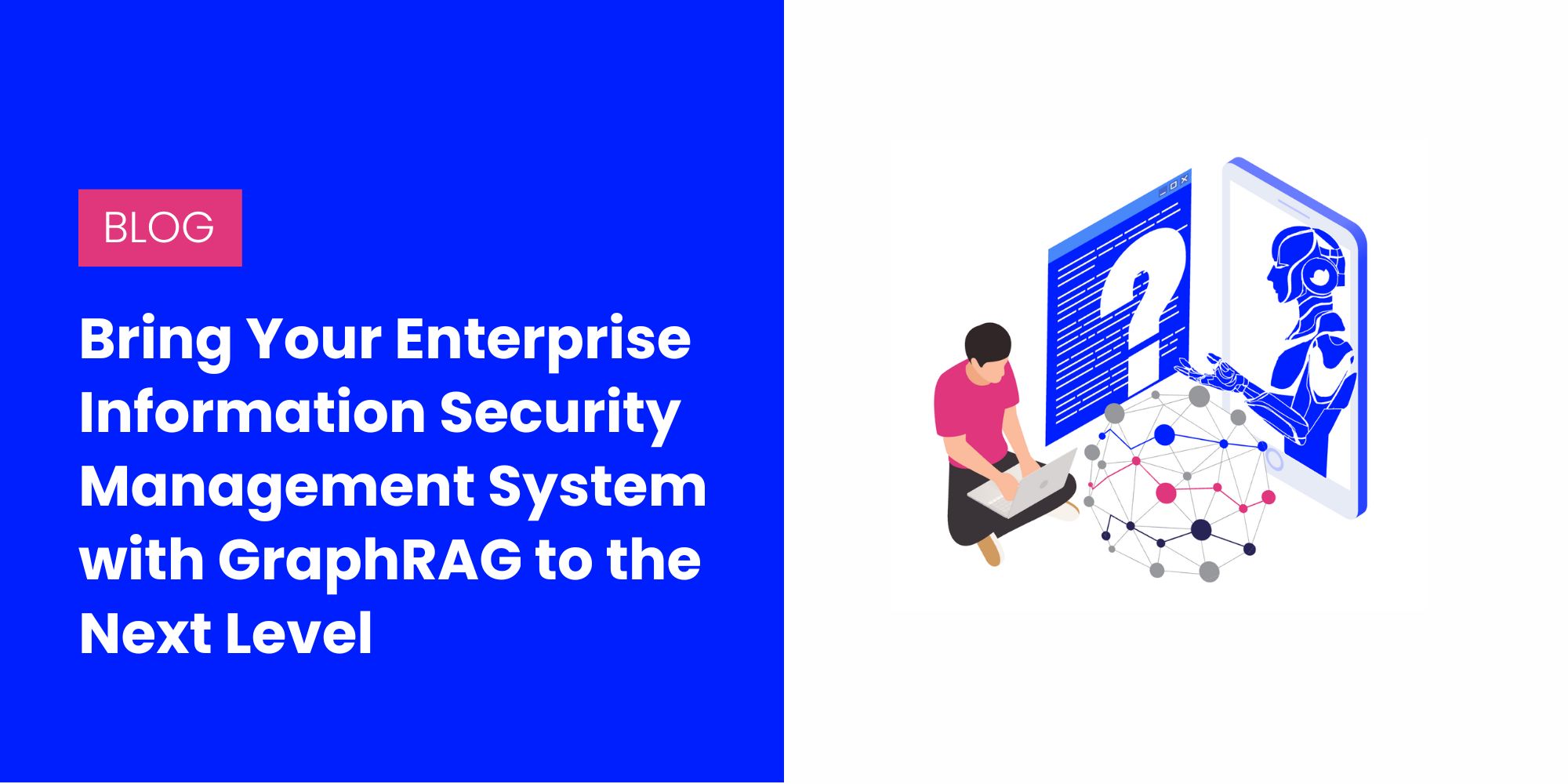How GraphRAG systems enhance enterprise information security management by using knowledge graphs to map relationships between assets, threats, and controls, enabling automated risk assessment, streamlined auditing, and continuous improvement of security policies.

The Graphwise GraphRAG system supports you to maintain your enterprise information security management system (ISMS) by providing a structured, verifiable, and continuously updated view of your organization’s ISMS. It helps automate compliance risks, improve risk management, and ensure a clear, auditable trail of security policies and controls.
How GraphRAG systems work
Before diving into ISMS, it’s helpful to understand what a GraphRAG system is.
A Traditional RAG (Retrieval-Augmented Generation) is an AI architecture that combines a large language model (LLM) with a retrieval system. When a user asks a question, it finds relevant documents from a knowledge base (like a vector database) and uses that information to generate a more accurate and contextually relevant answer. However, traditional RAG often struggles with understanding the relationships between different pieces of data.
With a GraphRAG, a RAG is enhanced using a knowledge graph as its external knowledge base. A knowledge graph stores information as a network of interconnected entities (nodes) and their relationships (edges). This structure allows the system to perform multi-hop reasoning — following a chain of relationships to provide a more holistic and accurate answer. Instead of just retrieving a document, it can retrieve a set of interconnected facts, which is crucial for complex tasks like security policy management.
Supporting ISMS with GraphRAG
GraphRAG directly addresses several key ISMS requirements, particularly those related to risk management, documentation, and continuous improvement.
Risk management and assessment
With your ISMS it is required to identify, assess, and treat information security risks. A GraphRAG system maps risks and controls by modeling the relationship between assets, threats, vulnerabilities, and security controls within a knowledge graph.
For example, a node for a “server” might be connected to a “ransomware” threat, which is mitigated by a “backup policy” control. An AI agent, powered by the GraphRAG system, can analyze these relationships to identify potential attack paths or emerging risks that a human might miss. When a new vulnerability is discovered, the system can automatically identify all affected assets and the controls that need to be updated. This capability ensures a proactive approach to risk management, which needs to be a core part of your ISMS.
Policy and documentation management
Your ISMS mandates comprehensive and up-to-date documentation, including security policies, procedures, and a Statement of Applicability (SoA).
All your security policies, procedures, and records can be stored in a centralized knowledge graph and linked to your documentation. This single, easy-to-navigate graph links policies to the specific ISMS standard clauses (like ISO and SOC), the responsible departments, and the protected assets, creating one central source of truth.
During an ISMS audit, an auditor might ask, “Show me all the controls related to access management for our cloud infrastructure, and who is responsible for them?” A GraphRAG system can query the knowledge graph to provide a precise, verifiable answer in real-time, complete with a clear trail of linked documents and responsible parties. This reduces the manual effort and potential for error during audits.
Continuous improvement and auditing
Your standard requires your organization to continuously monitor, review, and improve your ISMS.
The graph can be used to analyze the effectiveness of controls and identify gaps. For example, it can link incident reports to the controls that failed to prevent them. This helps identify weaknesses in the ISMS and informs corrective actions, which is a key part of the continual improvement process.
Your statement of applicability outlines which security controls your organization has implemented and which they have not. GraphRAG can help you manage this document by linking each control to its implementation details, allowing for easy updates and ensuring the SoA is always current and accurate. This is crucial for both internal management and external audits.
Summary
A GraphRAG system can elevate your enterprise’s ISMS by creating a structured and verifiable view of its security policies. Unlike traditional RAG systems that only retrieve documents, a GraphRAG uses a knowledge graph to understand the relationships between data points, enabling a more holistic and accurate analysis.
This technology can automate and improve risk management by mapping connections between assets, threats, and security controls to identify potential vulnerabilities. Finally, it streamlines audits and ensures continuous improvement by linking all policies, procedures, and records in a central, easily searchable source of truth.
Want to learn more about the interplay of GraphRAG and LLMs?

